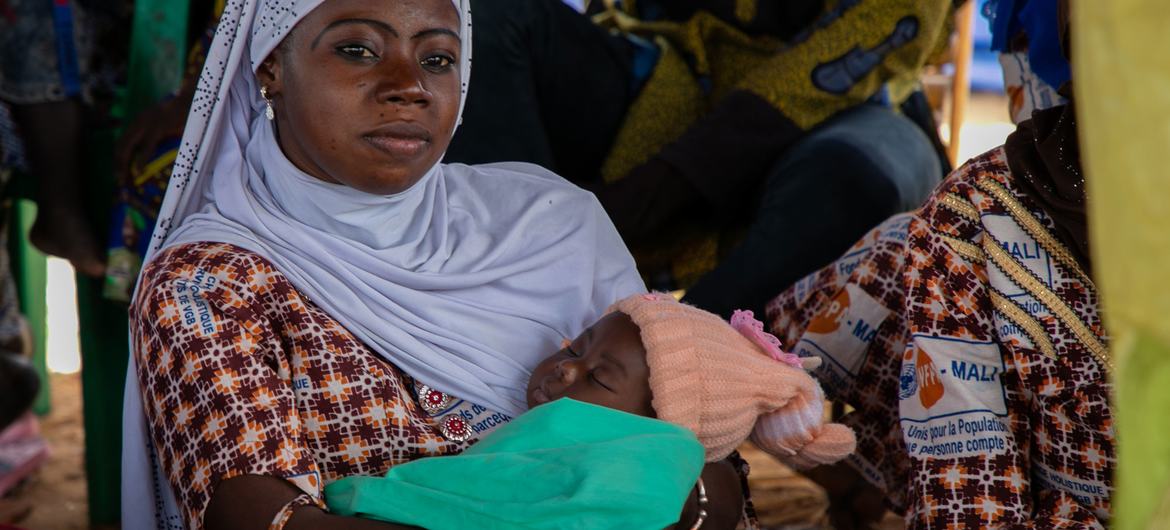For information concerning admissions, testing, and other non-library related Dual Credit information, please visit the Howard College Dual Credit webpage:

Dual Credit students receive the same library access as campus and online HC students. You can check out books, use the computers, and access library subscription databases from off-campus. Use your HC credentials to log in to the databases.
![]() Do you need help getting started? Review our video tutorials:
Do you need help getting started? Review our video tutorials:
High School students not taking any HC classes have library access as guests or community members. If 16 or over, students may sign in as a guest at the front desk to use the computers and have borrowing privileges. High school students can also request to use the library databases. To do that fill out the form below and then make use of the instructions below:
![]()
Are you an HC student having problems accessing the databases? Review this page.
Academic research goes beyond a simple Google search. The research process requires you to think critically and seek quality resources. Although research can sometimes be confusing and frustrating, it can also be very rewarding once you become familiar with the tools and methods of successful researching. Remember, your friendly librarians are always available to assist you with any questions you have.
First, make sure you are evaluating your articles for currency, relevance, authority, accuracy, and purpose. Review the graphics and videos here to get started:
The following databases, websites, and ebooks will help you on your journey in this course.
These resources will guide you in exploring national and international current events.
(Select "Website" at end of feed for more information.)
(Select "Website" at end of feed for more information.)
(Select "Website" at end of feed for more information.)
(Select "Website" at end of feed for more information.)

The updated dress code prohibits nudity on the Red Carpet and in other areas of the festival. The new rules surprised one jury member, who had to make a last-minute outfit change.
(Image credit: Monica Schipper/Getty Images)

President Trump's first major overseas trip of his second term is to the same place as his first term, the Middle East. Trump is visiting the Gulf States of Qatar, Saudi Arabia and the United Arab Emirates. And he is scheduled to meet with Syria's new president for the first time. We'll hear about the significance of that meeting and the deals between the U.S. and Gulf countries being announced. We'll also hear about the personal relationships and family business deals Trump has with various Gulf Arab rulers.
(Image credit: BRENDAN SMIALOWSKI)

As a neighbor of Ukraine's and host to more than 2 million of its war refugees, Poland has seen, heard and felt what Russia is capable of, and it's now preparing for the worst. This year, Poland will spend nearly 5% of its GDP on defense, more than any other NATO member, including the U.S.
NPR's Rob Schmitz reports on the country's plan to train every adult in Poland for war.
For sponsor-free episodes of Consider This, sign up for Consider This+ via Apple Podcasts or at plus.npr.org.
Email us at considerthis@npr.org.
(Image credit: Omar Marques)

Two former dancers allege that they lived under a culture of fear and routinely performed despite injuries. Shen Yun has vehemently denied the claims.
(Image credit: Michael Siluk)

There are lots of unknowns ahead of potential direct talks between Russia and Ukraine in Turkey.
(Image credit: Gavriil Grigorovnhac and Nhac Nguyen)
(Select "Website" at end of feed for more information.)
(Select "Website" at end of feed for more information.)
(Select "Website" at end of feed for more information.)
Chouhan said journalists are increasingly relying on artificial intelligence to assist their fact-checking efforts. He noted that key technologies being employed include machine learning algorithms, natural language processing, and image, audio, and video recognition.
Chouhan, who was speaking at WAN-IFRA’s Bangalore AI Forum, outlined several reasons why AI is becoming essential in fact-checking:
Chouhan outlined three key examples of how newsrooms are deploying AI to tackle misinformation head-on. These cases demonstrate how AI is being utilised to monitor conflict zones, track statements in real time, and enhance fact-checking efficiency – addressing the growing misinformation in news.
Chouhan cited the Norwegian fact-checking cooperative Faktisk Verifiserbar, which is leveraging AI to monitor conflict zones.
“They focus on fact-checking conflict areas using OSINT techniques,” he said, pointing to their work tracking troop movements and artillery during the Ukraine war and later the Israel-Gaza conflict.
The organisation employs a combination of open-source tools such as Google Reverse Image Search, Google Earth Pro, and Google Maps. In one instance, they debunked a false claim about a US missile interception in Iran.
“They looked at Google Earth Pro, various reverse image searches, and combined it with reporter verification to provide a quick update that the story was fake,” he explained.
Faktisk also uses commercially available services like GeoSpy, which matches unique features from photographs against geographic databases.
Additionally, Chouhan said, the organisation has partnered with AI researchers at local universities to develop tools such as a Tank Classifier – capable of identifying and classifying tanks and artillery – and a video verification dashboard that automates the detection and processing of battlefield imagery.

Their system monitors live TV, online news, and social media to identify statements that could be fact-checked.
“The system looks at claims or sentences which can be called claims and flags those to journalists for verification,” Chouhan explained.
The tool cross-references statements against an extensive database of previous fact checks and data from the UK’s Office for National Statistics, helping to speed up verification without starting from scratch.
“They have a live page where they keep checking what’s happening in Parliament constantly, which is very good for democracy actually,” he added.
Chouhan also highlighted Factly, a Hyderabad-based fact-checking and public data research company that has been leveraging technology since 2016.

“They claim to have published around 10,000 fact checks in English, Telugu, and Kannada,” he said, noting that the organisation focuses heavily on data journalism, supported by a dedicated in-house tech team.
Factly has developed two AI-based products trained on its own journalism and public datasets: Dataful and Tagore AI.
Dataful is a portal containing over 20,000 high-value public datasets relevant to various Indian sectors, drawn from government and other public sources. It is offered as a paid tool.

Tagore AI is a chatbot still under development, designed to answer verification queries based solely on Factly’s own verified content. “There is very little chance of hallucination because they are using their own journalism for training,” Chouhan said.
Despite its promise, AI-driven fact-checking still faces significant limitations, Chouhan cautioned.
Chouhan emphasised that while AI offers significant support, it should not replace human fact-checkers. “First-level filtering can be done through AI. It is being done all over the world, and I think we can also do that,” he said.
He stressed the importance of continuous improvement of AI training datasets to reduce bias and maintain quality. “We need to keep a close watch on where it’s going,” he added.
The post From Norway to India: How AI is reshaping global fact-checking efforts appeared first on WAN-IFRA.
By Shawn McIntosh
Independent journalism is not a luxury. It is the foundation of functional democracy, the first line of defense against corruption and disinformation, and a cornerstone of peaceful, prosperous societies. When journalism crumbles, democracy falters. When democracies falter, instability follows — as does violence, with alarming frequency. That makes supporting media not just a matter of free expression, but of international security and economic resilience.
This is no longer theory. It’s a reality playing out in fragile democracies around the world. A new report conducted in Armenia by the Baltic Center for Media Excellence offers a revealing case study and a global warning As we marked World Press Freedom Day this past week, it is a fitting moment to appreciate the fundamental problems besetting independent journalism in developing democracies, especially with the dismantling of virtually all U.S.-government media development projects by the Trump Administration.
For decades, U.S. government programs like USAID’s media assistance portfolio have played a quiet but indispensable role in keeping independent journalism alive. They’ve funded cybersecurity training, supported legal defense for journalists under threat, financed infrastructure improvements, and helped fragile outlets build sustainable business models. These were not ideological projects — they were democracy infrastructure, national security policy in practice. And today they’re being gutted.
Fueled by a wave of isolationist rhetoric and billionaire-fueled attacks on anything labeled “foreign aid,” USAID’s media support programs, which educational institutions like mine have relied on, are being defunded or dismantled altogether. The decision may win short-term political points, but it reflects a profound misunderstanding of how global influence works—and how democracy is defended.
Armenia may seem peripheral in global affairs. But as a small democracy wedged between authoritarian powers with little or no press freedom—Russia, Iran, Turkey, and Azerbaijan—it has become a frontline state in the struggle between democratic resilience and autocratic influence.
On the surface, Armenia’s journalism landscape may look robust. Reporters Without Borders World Press Freedom Index 2025 saw Armenia’s ranking rise from 43rd in 2024 to 34th this year—a score similar to Moldova and Slovenia, and not far behind several Western European countries. (Shamefully, it’s also more than 20 places higher than the U.S. score of 57th place (a drop of two places).
But the index belies the many serious vulnerabilities faced by journalists in Armenia today that U.S. journalists generally have not had to deal with to nearly the same degree. Armenian journalism is being squeezed not by a single source of repression, but by a thousand quiet breakdowns: legal ambiguity, digital insecurity, financial fragility, burnout, and rising physical risk.
The Armenian Media Vulnerability Report 2025, co-produced by Armenia’s Media Initiatives Center, offers a detailed look at several areas that seriously threaten the viability of Armenian media.
What it finds is as illuminating as it is alarming. Armenian media outlets, many of which do courageous investigative reporting, are structurally unprepared for the challenges they face. Most lack backup power or secure internet. Many operate without crisis communication strategies or relocation plans in case of emergencies. Journalists reporting from high-risk zones often do so without protective equipment, insurance, or even evacuation protocols.
Critically, freelancers — who constitute a vital part of Armenia’s media ecosystem — often work without formal contracts. This creates a cascade of risks: journalists may be unpaid or unprotected; outlets may not own the rights to the content they publish; and there is no enforceable commitment to ethical standards, confidentiality, or data security. In a region rife with political interference, this kind of informality can be fatal — not just for careers, but for public trust and journalistic integrity.
Ethical vulnerability is another area of concern. Most Armenian outlets lack conflict-of-interest policies – which in the long run will harm credibility. Journalists are not required to disclose personal, financial, or political affiliations that might bias their reporting. There are few clear standards on accepting gifts or favors. And in a polarized environment, where credibility is everything, this lack of internal regulation can quickly lead to reputational collapse—even if reporters are acting in good faith.
None of these issues are unique to Armenia. This country is merely functioning as a revealing microcosm of what’s happening in media environments around the world. From Eastern Europe to Latin America to underserved U.S. news deserts, many of the same structural weaknesses are present. The difference is often just a matter of how many other structures — political, institutional, legal — can be relied on to support journalism. And we see those structures being dismantled in many places, not just with the evaporation of support for global media development.
When we abandon journalism, we don’t just abandon reporters. We abandon the watchdogs who keep elections fair. We abandon the red flags that signal democratic backsliding. And we abandon the only credible voices capable of cutting through disinformation in moments of crisis. Nature abhors a vacuum — and when legitimate, trustworthy journalism is not there that vacuum gets filled by state propaganda, by weaponized narratives, and by hostile actors who know exactly how to manipulate public emotions.
The Armenian report makes clear that saving journalism isn’t prohibitively expensive. The needs are modest but urgent: back-up power supplies like UPS systems and Starlink connections to keep newsrooms online. SecureDrop installations to protect whistleblowers. Contracts and protocols for freelancers. Training on ethical practices, cyber hygiene, and AI verification. Safety kits and trauma support for reporters in conflict zones. In short, the building blocks of a profession under siege.
Even small investments can have outsized impact. And the return on investment is enormous: resilient media that can expose abuse, hold leaders accountable, and act as a stabilizing force in polarized societies. That’s not just good for the countries in question. It’s good for the world. Because democratic breakdowns don’t stay contained. They spread, across borders and timelines, in the form of refugees, extremism, economic shocks, and geopolitical volatility.
We should not wait for another full-blown media blackout or politically motivated purge to act. It’s time to stop treating media support as philanthropy or idealism, or expecting market logic to solve the issues. It is hard strategy. It is early-warning defense. It is the low-cost insurance policy we will wish we had paid into when democratic collapse comes to collect the bill.
Let Armenia’s vulnerability serve not just as a cautionary tale — but as a call to action. The world should care about developing the media in small, vulnerable countries feeling their way from darkness to democracy. If the U.S. government won’t do it, philanthropists and NGOs should pick up the slack.
Download the report here.
Shawn McIntosh is Chair of the M.A. in Multiplatform Journalism Program at the American University of Armenia, and has lectured in Strategic Communications at Columbia University and journalism at the Massachusetts College of Liberal Arts and at the College of Saint Rose. He is a graduate (’99) of the Columbia University School of Journalism.
The post Global independent media needs support appeared first on WAN-IFRA.
(Select "Website" at end of feed for more information.)

BRATISLAVA, May 13 (IPS) - A controversial amendment to Hungary’s constitution has left the country’s LGBTQI community both defiant and fearful, rights groups have said.

UNITED NATIONS, May 13 (IPS) - Next month marks the 80th anniversary of the United Nations Charter.
The Charter is our roadmap to a better world – our owner’s manual setting out purposes and principles – and our practical guide to advancing the three pillars of our work: peace and security, development and human rights.

UNITED NATIONS, May 13 (IPS) - A six-page internal document, marked “STRICTLY CONFIDENTIAL” on every single page – indicating restricted access to protect sensitive information-- is one of the most comprehensive “compilation of non-attributable suggestions by the UN80 Task Force” on the proposed restructuring of the world body.
No aid has entered Gaza for more than 10 weeks and every single one of the 2.1 million people there faces famine conditions, the UN Emergency Relief Coordinator Tom Fletcher said on Tuesday in a briefing to the Security Council in New York.

Women’s organisations operating in crisis settings are being pushed to the brink by widespread funding cuts. In a report published on Tuesday, UN Women – the UN agency for gender equality – warned that 47 per cent of these groups may be forced to close within the next six months.
(Select "Website" at end of feed for more information.)
Plagiarism occurs when a writer/speaker uses someone else’s words or ideas without giving them credit. In academic writing, plagiarizing involves using words, ideas, or information from a source without citing it correctly. The following tools will aide you in avoiding plagiarism and properly citing your sources.

